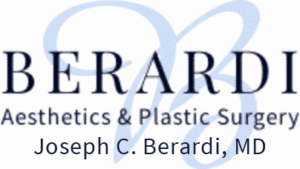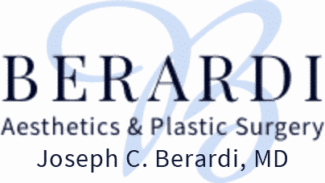Welcome to Berardi Aesthetics & Plastic Surgery, where Dr. Berardi and his team are committed to helping you achieve your desired aesthetic goals. Breast augmentation is a popular procedure that allows women to enhance their natural curves and boost their self-confidence. With various options available, including silicone and saline implants, as well as fat transfer breast surgery, it’s important to understand the pros and cons of each method. In this article, we’ll explore the different types of breast augmentation offered by Dr. Berardi and help you determine the best option for you.
Silicone Breast Implants
Silicone breast implants are filled with a cohesive silicone gel. Here’s what you need to know:
Pros:
- Natural look and feel: Silicone implants closely resemble the texture and feel of natural breast tissue, providing a more natural appearance.
- Reduced risk of rippling: Silicone implants are less likely to cause visible rippling, making them an excellent choice for patients with thin skin or minimal breast tissue.
- Durability: Silicone implants are known for their durability and long-lasting results.
Cons:
- Silent rupture: Unlike saline implants, silicone implant ruptures are often silent and may require regular check-ups and imaging to detect any potential leaks.
- Higher cost: Silicone implants are typically more expensive than saline implants.
Saline Breast Implants
Saline breast implants are filled with a sterile saltwater solution. Consider the following:
Pros:
- Adjustable size: Saline implants can be filled after insertion, allowing for size adjustments to achieve your desired look.
- Lower cost: Saline implants are generally more affordable than silicone implants.
- Rupture detection: If a saline implant ruptures, it is immediately noticeable, making it easier to detect and address the issue promptly.
Cons:
- Less natural feel: Saline implants may not feel as natural as silicone implants, especially in patients with less breast tissue.
- Visible rippling: Saline implants can sometimes create visible rippling, particularly in patients with thin skin or minimal breast tissue.
Fat Transfer Breast Surgery
Fat transfer breast surgery, also known as autologous fat grafting, involves using your body’s own fat to enhance breast size and shape. Here are the pros and cons:
Pros:
- Natural and long-lasting results: Fat transfer breast surgery offers a more natural result since it uses your body’s own fat cells. The results can be long-lasting.
- Simultaneous body contouring: Liposuction is performed in areas with excess fat, allowing for body contouring and enhancing breast size simultaneously.
Cons:
- Limited increase in size: Fat transfer breast surgery may provide a moderate increase in breast size. If you desire a significant size increase, implants may be a better option.
- Multiple procedures may be required: In some cases, multiple fat transfer procedures may be necessary to achieve the desired breast size and shape.
Berardi Aesthetics & Plastic Surgery For Your Breast Augmentation
When considering breast augmentation, it’s essential to consult with a board-certified plastic surgeon like Dr. Berardi, who offers a range of options including silicone and saline breast implants, as well as fat transfer breast surgery. Silicone implants provide a natural look and feel with reduced risk of rippling, while saline implants offer adjustability and a more affordable option. Fat transfer breast surgery utilizes your body’s own fat for a natural result. Dr. Berardi and his experienced team will guide you in selecting the best option based on your goals, anatomy, and preferences.
Contact Berardi Aesthetics & Plastic Surgery today to schedule a consultation with Dr. Berardi. We are dedicated to providing personalized care, prioritizing patient safety, and helping you achieve the beautiful, confident look you desire.



